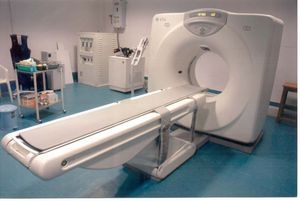The future for the X-Ray tech is bright. As technology advances so does the relevance of this job. From Magnetic Resonance Imaging to state-of-the-art CT scans down to general diagnostic radiography the importance and need for people who can perform these duties is growing rapidly.
The job security in these fields is fantastic. The need for x-ray techs is predicted to go through the roof in the near future, in fact it already is happening. Most people in school have jobs waiting for them before they graduate.
Since the time when Wilhelm Roentgen discovered x-rays to this day the use of radiology has expanded exponentially into the health care fields, into aviation industry, to engineering, even aerospace. It could easily be argued that the discovery of x-rays is one of the most important discoveries of mankind, right up there with the discovery of the wheel and fire.
We use x-rays in the health care field to diagnose disease and also to treat disease and ailments. X-rays are used to check sensitive and important welds or to explore the age of the universe. Dentists, doctors, scientists, geologists etc all use x-rays.
Because x-rays are ionizing rays they can be hazardous to living things. Therefore they must be regulated by government agencies. And they must be conducted by people who are trained and knowledgeable about them. And these people are x-ray technologists. They are taught how to use them effectively, how to use them safely, how much to use, and when too much is being used. X-ray technicians are professionals who are invaluable when it comes to the safe and effective use of this ionizing ray. They are specialists in their field, no one else is qualified to do their job.
And there are many jobs awaiting them out there. The x-ray tech license allows the basic radiological technologist to branch out into several related fields including nuclear medication, magnetic resonance imaging, computerized axial scanning, ultrasonography, mammography, and radiation therapy. Some even go on to become radiation safety officers in aerospace work or for industrial applications.
The pay scale for x-ray technologists have been rising steadily over the past few decades. In the 1980’s a diagnostic x-ray tech could expect a salary anywhere from $17,000.00 a year to approximately $35,000.00 annually. Now the salaries run $30,000.00 at the low end to $65,000.00 at the high end. And those who specialize, such as CT techs can expect even better pay.
Entry level education to become an x-ray technologist is an associates degree in the field and passing the board examination to become one. The American Registry of Radiologic Technologists is the governing board for techs. They also regulate continuing education that keeps x-ray technologists expertise and knowledge up to date.
Becoming an x-ray tech is a solid career choice with a bright future. And the future seems to look even brighter as time goes on and technology advances at an almost astronomical pace.




